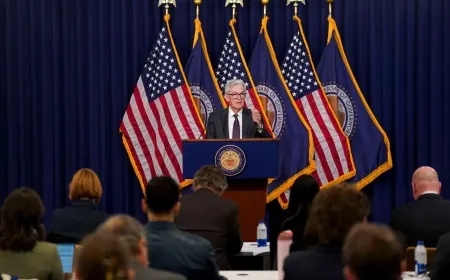New York Fed Study Says Avoiding Emergency Loans Could Be Riskier for Banks
A study from the New York Federal Reserve challenges the stigma of borrowing from the Fed, showing that banks who borrow are less likely to fail.

A new study from the New York Federal Reserve is turning an old belief about bank loans upside down. For years, banks have been avoiding borrowing money from the Federal Reserve’s discount window because they didn’t want to be seen as struggling. But this new research suggests that banks avoiding the discount window might actually be putting themselves at greater risk of failure.
What Is the Discount Window?
The discount window is the Fed’s emergency lending facility, where banks can borrow money if they are in trouble or need extra funds. The problem? For a long time, many banks have feared that borrowing from the Fed would make others think they’re in trouble. This idea is called “stigma.” The fear is that if the public knows a bank is using the discount window, they might think the bank is financially weak, which could make things even worse.
What the New Study Says
The New York Fed’s research challenges this view. The study says that the banks most hesitant to borrow from the Fed are actually the ones at the greatest risk of failing. Banks that avoid using the discount window often end up facing higher borrowing costs elsewhere. This means they pay extra interest to borrow from private markets instead of getting cheaper rates through the Fed.
The study also found that banks that use the discount window are actually more likely to survive than those that avoid it. In other words, borrowing from the Fed may make a bank stronger, not weaker.
Why Avoiding the Discount Window Can Be Riskier
The research shows that for smaller banks (those with assets under $50 billion), avoiding the discount window costs them millions in extra interest each year. Banks that are most worried about the stigma end up paying higher rates to borrow money in private markets—up to $500 million extra in the decade leading up to 2024.
So, what does this mean? The study suggests that banks that borrow from the Fed are actually in a better position than those that don’t. Instead of being punished, they should be rewarded because they are taking steps to make sure they stay financially healthy.
Changing the Way We Think About Borrowing from the Fed
This study calls for a shift in how we view banks using the discount window. Instead of seeing it as a sign of weakness, it might actually be a smart move for a bank to borrow from the Fed. By doing so, they can avoid paying extra costs elsewhere and reduce the risk of failure.
For regulators, this is an important lesson: Banks should be encouraged to use the discount window without fear of being judged. The Fed has already tried to make it clear that borrowing from the discount window won’t make regulators think a bank is in trouble. Hopefully, this new research will help shift attitudes and encourage more banks to use the tool when needed.
The discount window stigma—the idea that borrowing from the Fed signals weakness—isn’t as true as many thought. In fact, the new research shows that banks avoiding the discount window could be putting themselves at more risk. Instead of shying away from it, banks should feel more comfortable borrowing from the Fed when they need help. It could actually make them stronger and less likely to fail.
Also Read: IMF Raises US Growth Forecast Lowers China Global Economy Slows Down
































































